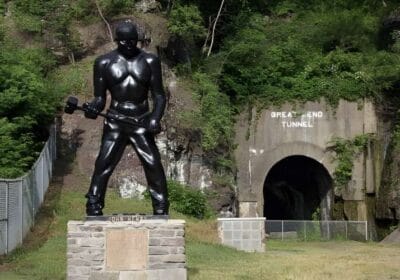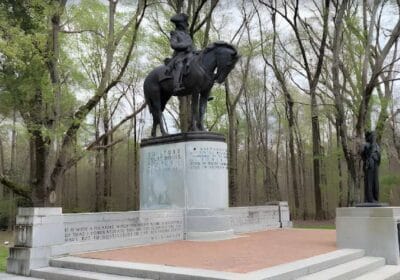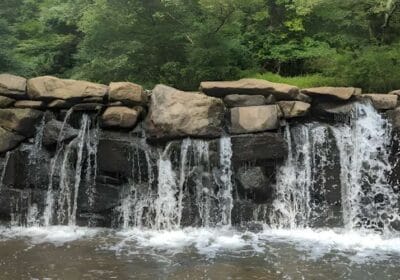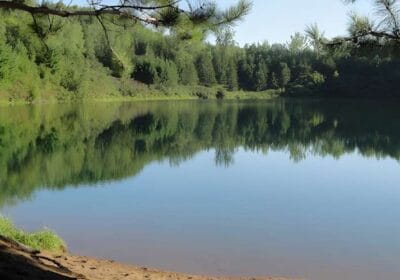Bryce Canyon National Park is one of the most popular tourist attractions in the United States, located in the state of Utah. This unique park is known for its stunning hoodoos, which are spire-shaped rock formations that rise up from the ground like natural skyscrapers. Bryce Canyon is also famous for its spectacular scenic views, which offer visitors breathtaking vistas of the surrounding landscapes.
In this article, we’ll take a closer look at Bryce Canyon National Park, exploring its geology, wildlife, and natural history. We’ll also provide tips for planning your visit and highlight some of the most popular hiking trails and scenic viewpoints in the park.
Geology of Bryce Canyon National Park
Bryce Canyon National Park is situated on the eastern edge of the Paunsaugunt Plateau, which is part of the larger Colorado Plateau region. The park covers an area of 35,835 acres and is located at an elevation of 8,000 to 9,000 feet above sea level.
The hoodoos that are so characteristic of Bryce Canyon were formed over millions of years through a process known as frost-wedging. In the winter, water seeps into the cracks in the rocks and freezes, expanding and breaking the rocks apart. Over time, this process created the unique spire-shaped formations that we see today.
Bryce Canyon is also home to a number of other interesting geologic features, including natural arches, windows, and bridges. These formations were created by the same forces that shaped the hoodoos and provide additional opportunities for exploration and discovery.
Wildlife at Bryce Canyon National Park
Bryce Canyon is home to a diverse range of wildlife species, including black bears, mountain lions, elk, and mule deer. Visitors to the park can also spot smaller animals like coyotes, foxes, and chipmunks.
One of the most interesting wildlife species at Bryce Canyon is the California Condor, which is one of the largest birds in North America. The California Condor was on the brink of extinction in the 1980s, but through conservation efforts, its population has been slowly recovering. Today, visitors to Bryce Canyon can spot these magnificent birds soaring overhead.
Natural History of Bryce Canyon National Park
Bryce Canyon has a rich cultural history that dates back thousands of years. The park is located on the traditional lands of the Paiute people, who have lived in the area for centuries.
European settlers began to explore the area in the mid-19th century, and the first scientific exploration of the park was conducted in the 1870s. In 1928, Bryce Canyon was established as a national park, preserving the area’s unique natural and cultural heritage for generations to come.
Planning Your Visit to Bryce Canyon National Park
If you’re planning a visit to Bryce Canyon National Park, there are a few things to keep in mind. First, the park is open year-round, but some facilities and roads may be closed during the winter months due to snow and ice.
To make the most of your visit, plan to spend at least one full day exploring the park. There are a number of hiking trails and scenic drives to choose from, so be sure to pick up a map and plan your route ahead of time.
Some of the most popular hiking trails at Bryce Canyon include the Navajo Loop Trail, the Queen’s Garden Trail, and the Fairyland Loop Trail. Each of these trails offers a unique perspective on the park’s geology and natural beauty, and all are well-marked and maintained.
Scenic viewpoints are also a must-see when visiting Bryce Canyon National Park. Some of the most popular viewpoints include Sunrise Point, Sunset Point, and Inspiration Point. Each of these viewpoints offers breathtaking views of the hoodoos and surrounding landscapes, and are especially beautiful during sunrise and sunset.
In addition to hiking and scenic drives, visitors to Bryce Canyon can also enjoy a variety of other outdoor activities. These include horseback riding, camping, stargazing, and ranger-led programs.
For those who prefer a more leisurely experience, there are also a number of easy walking trails and paved overlooks throughout the park that offer stunning views with minimal effort.
- Exploring the Hoodoos: The Unique Geology of Bryce Canyon National Park
Bryce Canyon’s hoodoos are some of the most unique geological formations in the world. Learn how these spire-shaped rocks were formed over millions of years, and why they continue to captivate visitors to the park. - A Wildlife Safari at Bryce Canyon National Park: Spotting Bears, Condors, and More
Bryce Canyon is home to a diverse range of wildlife species, from black bears and mountain lions to coyotes and chipmunks. Discover the best ways to spot these animals during your visit to the park. - Cultural Heritage and History at Bryce Canyon National Park
Bryce Canyon has a rich cultural history that dates back thousands of years. Learn about the park’s traditional inhabitants, European settlers, and its establishment as a national park in the 1920s. - Planning Your Visit to Bryce Canyon National Park: Tips and Tricks for Exploring the Park
Whether you’re a seasoned hiker or a casual visitor, there’s something for everyone at Bryce Canyon National Park. Discover the best hiking trails, scenic viewpoints, and other outdoor activities in the park, and learn how to plan the perfect visit.
Conclusion
Bryce Canyon National Park is a true gem of the American West, offering visitors a unique and unforgettable experience. Whether you’re exploring the hoodoos, spotting wildlife, or simply taking in the stunning scenery, there’s no shortage of things to see and do in this remarkable park.
So what are you waiting for? Start planning your trip to Bryce Canyon National Park today and discover the magic of this one-of-a-kind destination.





